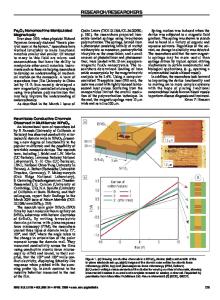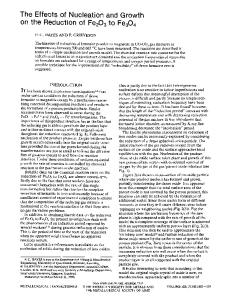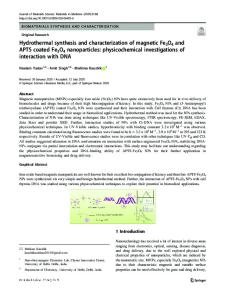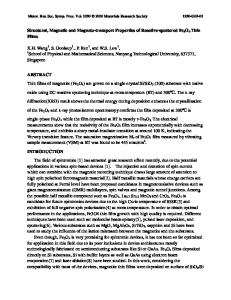Optical thermal insulation via the photothermal effects of Fe 3 O 4 and Fe 3 O 4 @Cu 2-x S thin films for energy-efficie
- PDF / 829,091 Bytes
- 9 Pages / 612 x 792 pts (letter) Page_size
- 89 Downloads / 369 Views
Research Letter
Optical thermal insulation via the photothermal effects of Fe3O4 and Fe3O4@Cu2−xS thin films for energy-efficient single-pane windows Jou Lin, Yuan Zhao, and Donglu Shi, The Materials Science and Engineering Program, Department of Mechanical and Materials Engineering, College of Engineering and Applied Science, University of Cincinnati, Cincinnati, OH 45221, USA Address all correspondence to Donglu Shi at [email protected] (Received 11 November 2019; accepted 2 January 2020)
Abstract To address critical energy issues in civic structures, we have developed a novel concept of optical thermal insulation (OTI) without relying on a conventional thermal intervention medium, such as air or argon, as often used in conventional window systems. We have synthesized the photothermal (PT) materials, such as the Fe3O4 and Fe3O4@Cu2−xS nanoparticles, that exhibit strong UV and near-infrared (NIR) absorptions but with good visible transparency. Upon coating the inner surface of the window glass with a PT film, under solar irradiation, the inner surface temperature rises due to the PT effect. Subsequently, the temperature difference, ΔT, is reduced between the single pane and room interior. This leads to lower the thermal loss through a window, reflected by the U-factor, resulting in considerable energy saving without double- or triple-glazing. Comparing with the Fe3O4 coatings, Fe3O4@Cu2−xS is spectrally characterized with a much stronger NIR absorbance, contributing to an increased PT efficiency under simulated solar irradiation (0.1 W/cm2). PT experiments are carried out via both white light and monochromic NIR irradiations (785 nm). The parameters associated with the thermal performance of the PT films are calculated, including PT conversion efficiency, specific absorption rate (SAR), and U-factor. Based on the concept of OTI, we have reached an optimum U-factor of 1.46 W/m2 K for a single pane, which is satisfactory to the DOE requirement (
Data Loading...











